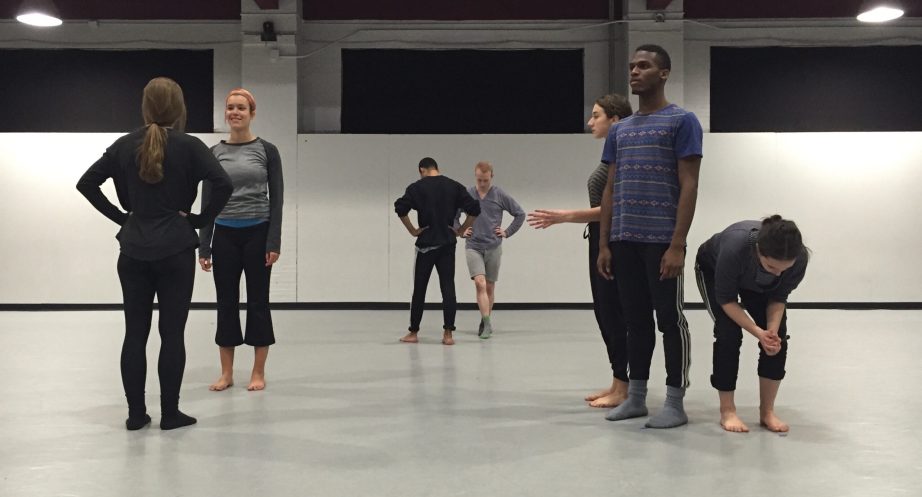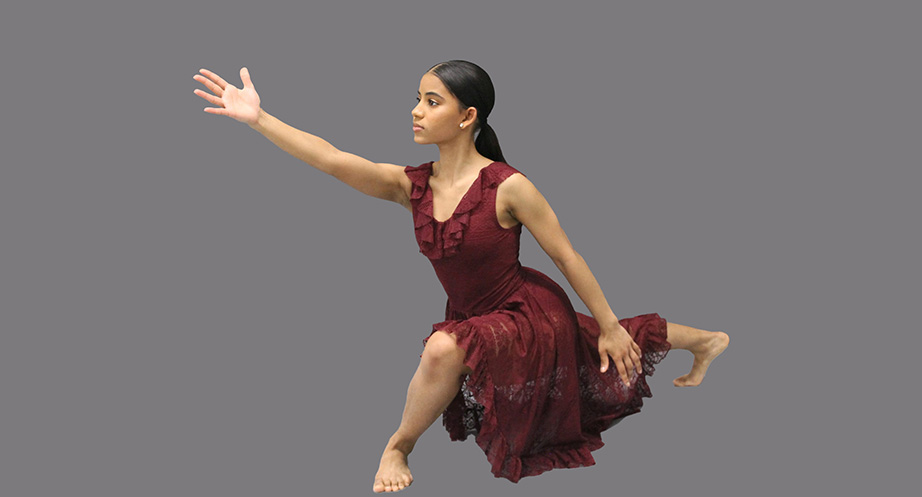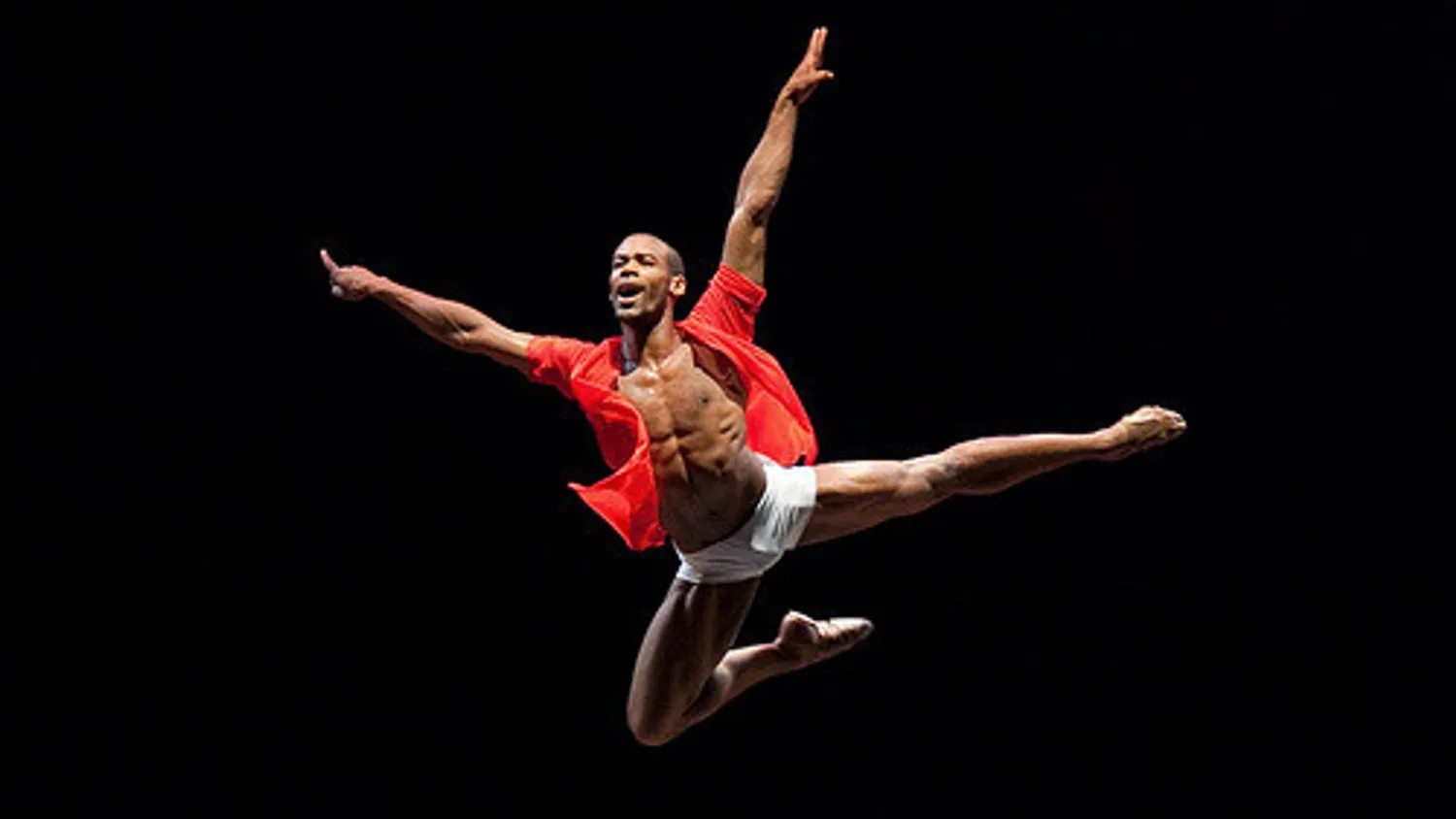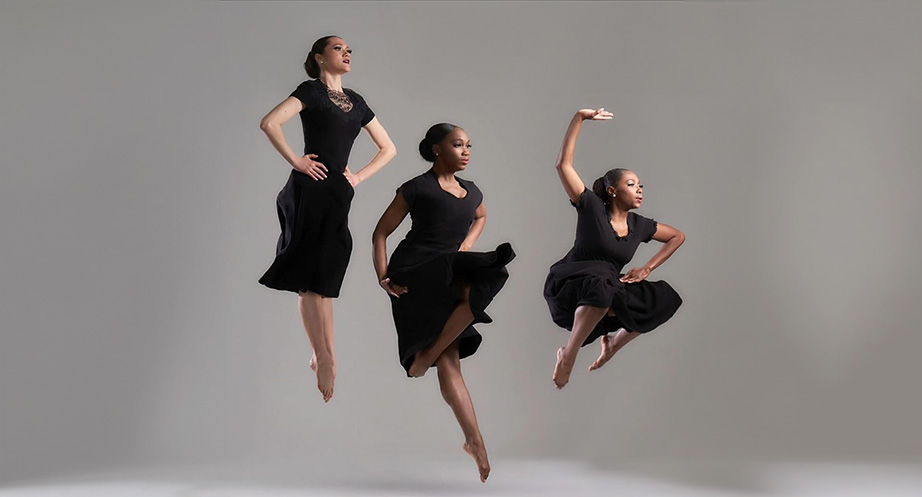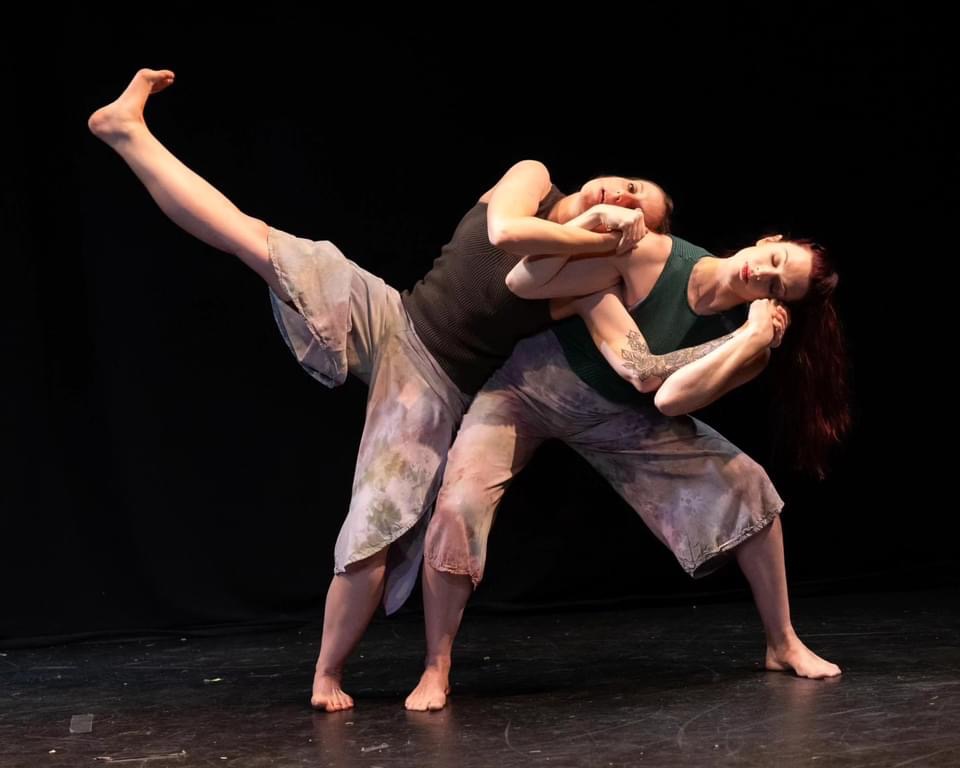by Gregory King, Visiting Assistant Professor of Dance at Swarthmore College for the Dance Journal
2011 Performance Bessie Award recipient or Outstanding Emerging Choreographer, Beth Gill employed her choreographic philosophy in the creation of Yolk – a 20-minute exploration of aesthetics and perception. Danced in silence, Yolk was a looping puzzle, as performers rotated roles, moving from one end of the Solmssen Court of Hamilton Hall to the next.
Dressed in various assortments of casual attire, the dancers entered the space from various parts of the room.
They slowly began with gestures… maybe a fall, one dancer gently stroking his own face.
They each had a purpose – individual yet connected.
Relationships were alluded to. Winked at.
Pin, wall, and round shapes were all made with their bodies.
Gill sat two seats to my left, and I found myself watching her watch her work – engaged but removed.
Dancer Donovan Reed, also a dancer with Eleone Dance Theatre, stomped the floor with one foot before rising to relevé on the other leg. Then he was still.
That was the first time I realized the piece was in silence.
Even in a state of musiclessness, they created their own music.
A walk, a rock, a slow crawl. They maneuvered around each other with pedestrian ease.
Given the repetitive nature of the piece, along with its lack of music, some would argue that Yolk was about nothingness – that it was another attempt at post-modernism. But upon further investigation, I think Yolk was about space and time.
Using Laban Movement Analysis (LMA), a systematic way of analyzing, observing, and describing movement, the dynamics in Yolk would inform us that there was particular emphasis placed on the effort factors of time and space. When described, effort is arguably the ongoing sense of self in relationship to the environment over time.
The dancers of Yolk were careful in how they interacted with each other. There was consideration for how they would get to where they were going and how much time it would take to get there. Looking at their movements through the lens of LMA, one might say that the dancers were in an “awake” state – a state of alertness.
In her opening remarks Gill was permissive about moving around the room in order to view the piece from different places, so as Beth got up to move to the place where the dancers started, I edged towards the place they would end.
I welcomed the problem-solving of figuring out if the geometry of the piece would change as I shifted my viewpoint.
Like pedestrian movement, dance lends itself to multiple interpretations.
The choreographer has a vision, the dancer brings to life that vision and the audience members interpret what the dancers physicalized.
The yolk of an egg is the part that feeds the developing embryo. Gill crafted a ballet that allowed each dancer to serve as the umbilical cord, the feed pipe, the Yolk.
As a choreographer, his works have been commissioned by Transformer Station (Cleveland, OH), Georgian Court University (Lakewood, NY), Texas Ballet Theatre School (Dallas, TX), Indiana University (Bloomington, IN), The Ammerman Center for Arts and Technology 16th Biennial Symposium (New London, CT), Current Sessions (New York, NY), and SPACES Gallery (Cleveland, OH), and presented at Dixon Place (New York, NY), The Kennedy Center (Washington D.C.), and Playhouse Square (Cleveland, OH).
He has taught master classes, lectures, and workshops nationally and internationally. He has served as dance faculty for Texas Ballet Theatre and Boston Ballet, as well as visiting assistant professor of dance at Temple University, and Swarthmore College.
King is a dance writer for The Dance Enthusiast, ThINKingDANCE, The Philadelphia Dance Journal, CHOICE Review, and Broad Street Review. Mr. King’s response to the Dancing for Justice Philadelphia event, was published in Conversations Across the Field of Dance Studies and cited in the U. S. Department of Arts and Culture’s 2016 resource guide, Art Became the Oxygen. In 2020 King was awarded a See Chicago Dance Critical Writing Fellowship and was invited to present his research at The University of Auckland, New Zealand.
In addition to having served on the dance review board for the National Endowment for the Arts, King was nominated for a Governor’s Award for the Arts in Ohio and was recently appointed to the Board of OhioDance. He was the 2018 recipient of the Outstanding Creative Contribution award from the Division of Diversity, Equity, and Inclusion at Kent State University, and served as Provost Faculty Associate for the academic year 2019- 2020. Mr. King is a tenure track professor of dance at Kent State where he serves as the artistic director of the Kent Dance Ensemble.
- Dear Philadelphia…. Next Round On Me! - August 17, 2016
- Talia Mason’s Onion Dances: Dancing Memories - July 5, 2016
- A Response to Beyond Dance Company … In Kind - June 30, 2016

